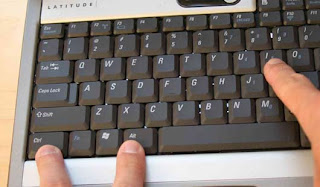Accessibility Controls – access.cpl
Accessibility Wizard – accwiz
Add Hardware Wizard- hdwwiz.cpl
Add/Remove Programs – appwiz.cpl
Administrative Tools – control admintools
Adobe Acrobat (IF IT’S INSTALLED)- acrobat
Adobe Designer(IF IT’S INSTALLED)- acrodist
Adobe Distiller (IF IT’S INSTALLED)- acrodist
Adobe ImageReady (IF IT’S INSTALLED)- imageready
Adobe Photoshop (IF IT’S INSTALLED) – photoshop
Automatic Updates – wuaucpl.cpl

B:
Basic Media Player - mplay32
Bluetooth Transfer Wizard – fsquirt
C:
Calculator – calc
Certificate Manager – certmgr.msc
Character Map - charmap
Check Disk Utility – chkdsk
Clipboard Viewer – clipbrd
Command Prompt – cmd
Command.com - command
Component Services – dcomcnfg
Compare files - comp
Computer Management – compmgmt.msc
Control Panel – control
Create a shared folder wizerd – shrpubw
D:
Date and Time Properties – timedate.cpl
DDE Shares – ddeshare
Device Manager - devmgmt.msc
Direct X Control Panel (IF IT’S INSTALLED)* – directx.cpl
Direct X Troubleshooter – dxdiag
Disk Cleanup Utility – cleanmgr
Disk Defragment – dfrg.msc
Disk Management - diskmgmt.msc
Disk Partition Manager - diskpart
Display Properties – control desktop
Display Properties – desk.cpl
Display Properties (Appearance) – control color
Dr. Watson (system troubleshooting) - drwtsn32
Driver Verifier Utility – verifier
E:
Ethereal(IF IT’S INSTALLED) - ethereal
Event Viewer - eventvwr.msc
F:
Files and Settings Transfer Tool – migwiz
File Signature Verification Tool – sigverif
Findfast - findfast.cpl
Firefox (IF IT’S INSTALLED) - firefox
Folders Properties – control folders
Fonts – control fonts
Fonts Folder - fonts
Free Cell Card Game – freecell
G:
Game Controllers – joy.cpl
Group Policy Editor (XP Prof) – gpedit.msc
H:
Hearts Card Game – mshearts
Help and Support – helpctr
HyperTerminal – hypertrm
Hotline Client - hotlineclient
I:
Iexpress Wizard –- iexpress(it’s a funny tool, see it!)
Indexing Service – ciadv.msc
Internet Connection Wizard – icwconn1
Internet Explorer - iexplore
Internet Properties - inetcpl.cpl
Internet Setup Wizard - inetwiz
IP Configuration (internet connection configuration tool)- ipconfig /all
IP Configuration (DNS Cache Contents will show) – ipconfig /displaydns
IP Configuration (DNS Cache Contents will delete) - ipconfig /flushdns
IP Configuration (Release All Connections) - ipconfig /release
IP Configuration (Renew All Connections) - ipconfig /renew
IP Configuration (Refreshes DHCP & Re-Registers DNS) – ipconfig /registerdns
IP Configuration (Display DHCP Class ID) - ipconfig /showclassid
IP Configuration (Modifies DHCP Class ID)- ipconfig /setclassid
J:
Java Control Panel (IF IT’S INSTALLED) - jpicpl32.cpl
Java Control Panel (IF IT’S INSTALLED) - javaws
K:
Keyboard Properties – control keyboard
L:
Local Security Settings – secpol.msc
Local Users and Groups – lusrmgr.msc
Logs You Out Of Windows – logoff
M:
Malicious Software Removal Tool – mrt
Microsoft Access (IF IT’S INSTALLED) - access.cpl
Microsoft Chat – winchat
Microsoft Excel (IF IT’S INSTALLED) –- excel
Microsoft Diskpart - diskpart
Microsoft Frontpage (IF IT’S INSTALLED) –- frontpg
Microsoft Movie Maker – moviemk
Microsoft management console- mmc
Microsoft Paint – mspaint
Microsoft Powerpoint (IF IT’S INSTALLED)- – powerpnt
Microsoft Word (IF IT’S INSTALLED) –- winword
Microsoft Syncronization Tool - mobsync
Minesweeper Game – winmine
Mouse Properties – control mouse
Mouse Properties – main.cpl
MS-DOS Editor - edit
MS-DOS FTP - ftp
N:
Nero (IF IT’S INSTALLED) - nero
Netmeeting – conf
Network Connections – control netconnections
Network Connections- ncpa.cpl
Network Setup Wizard - netsetup.cpl
Notepad - notepad
Nview Desktop Manager (IF IT’S INSTALLED) –- nvtuicpl.cpl
O:
Object Packager – packager
ODBC Data Source Administrator - odbccp32.cpl
On Screen Keyboard – osk
Opens AC3 Filter (IF IT’S INSTALLED)- ac3filter.cpl
Outlook Express – msimn
P:
Paint – pbrush
Password Properties – password.cpl
Performance Monitor – perfmon.msc
Performance Monitor – perfmon
Phone and Modem Options - telephon.cpl
Phone Dialer - dialer
Pinball Game - pinball
Power Configuration – powercfg.cpl
Printers and Faxes – control printers
Printers Folder – printers
Prefetch folder- prefetch
Private Character Editor - eudcedit
Q:
Quicktime (IF IT’S INSTALLED) –- QuickTime.cpl
Quicktime Player (IF IT’S INSTALLED) –- quicktimeplayer
R:
Real Player (IF IT’S INSTALLED) –- realplay
Recent items- recent
Regional Settings – intl.cpl
Registry Editor – regedit
Registry Editor – regedit32
Remote Access Phonebook – rasphone
Remote Desktop - mstsc
Removable Storage – ntmsmgr.msc
Removable Storage Operator Requests – ntmsoprq.msc
Resultant Set of Policy (XP Proffessional) – rsop.msc
S:
Scanners and Cameras – sticpl.cpl
Scheduled Tasks – control schedtasks
Security Center – wscui.cpl
Services – services.msc
Sharing session - rtcshare
Shared Folders – fsmgmt.msc
Shuts Down Windows - shutdown
Sound recorder - sndrec32
Sounds and Audio - mmsys.cpl
Spider Solitare Card Game – spider
SQL Client Configuration - cliconfg
System Configuration Editor – sysedit
System Configuration Utility - msconfig
System File Checker Utility ( to instant file check) -– sfc /scannow
System File Checker Utility (next checking, when restart])- sfc /scanonce
System File Checker Utility (always check when pc start)- sfc /scanboot
System File Checker Utility (Return to Default Setting) – sfc /revert
System File Checker Utility (Purge File Cache) – sfc /purgecache
System File Checker Utility (Set Cache Size to size x) – sfc /cachesize=x
System Information – msinfo32
System Properties – sysdm.cpl
T:
Task Manager – taskmgr
TCP Tester - tcptest
Telnet Client – telnet
Tree- tree
Tweak UI (IF IT’S INSTALLED) - tweakui
U:
User Account Management – nusrmgr.cpl
Utility Manager – utilman
V:
Volume Serial Number for C: - label
Volume Control - sndvol32
W:
Windows Address Book – wab
Windows Address Book Import Utility – wabmig
Windows Backup Utility (IF IT’S INSTALLED) - ntbackup
Windows Explorer – explorer
Windows Firewall - firewall.cpl
Windows installer details - msiexec
Windows Address Book – wab
Windows Address Book Import Utility – wabmig
Windows Magnifier - magnify
Windows Management Infrastructure - wmimgmt.msc
Windows Media Player – wmplayer
Windows Messenger – msmsgs
Windows Picture Import Wizard (must have camera)- wiaacmgr
Windows System Security Tool – syskey
Windows Update Launches – wupdmgr
Windows Version (to windows version) – winver
Windows XP Tour Wizard – tourstar
Wordpad - write
Z:
Zoom Utility- igfxzoom
0
comments













